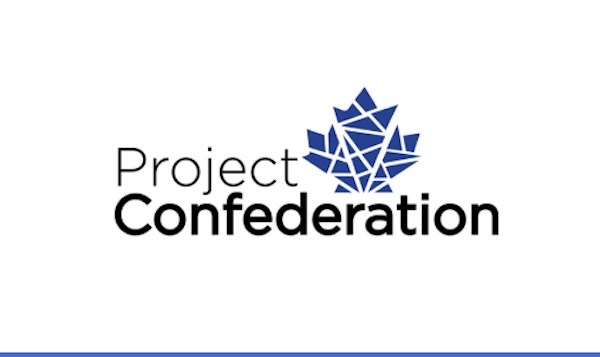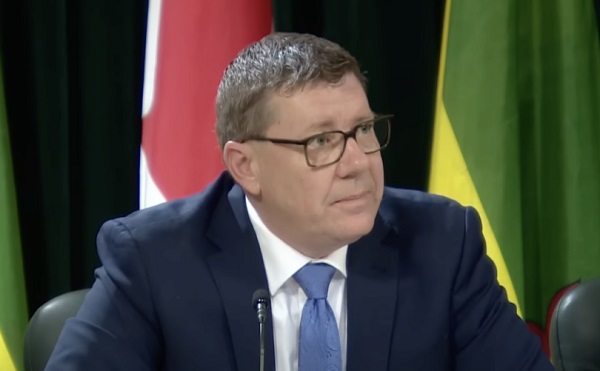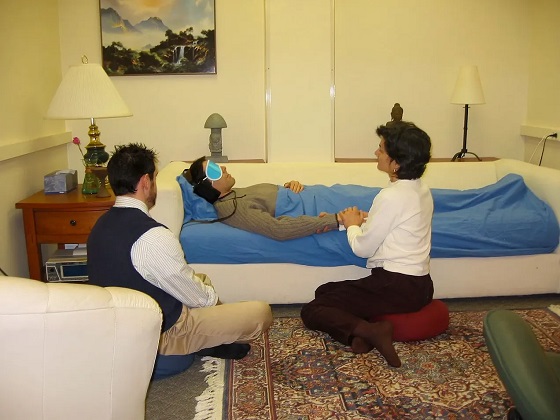Alberta
Advocacy group urges change to recall and citizen initiated referendum legislation

News release from Project Confederation
Project Confederation has been actively engaged in advocating for fair and inclusive democratic mechanisms for citizen participation in policy decisions.
In 2020, I presented arguments in favour of citizen initiated referenda and recall legislation to the Select Special Democratic Accountability Committee, emphasizing the significance of citizen-initiated referenda as a crucial aspect of democratic governance.
Bill 51, the Citizen Initiative Act, and Bill 52, the Recall Act, were passed into law in 2021.
While these bills were initially viewed as positive steps towards enhancing democracy in Alberta, it has become evident that they contain major flaws that hinder the effectiveness of recall and citizen initiative efforts.
To put it simply, the requirements are unattainable.
For instance, the requirement of collecting signatures from 40% of eligible voters for recall petitions for public officials, within a short 60-day period, posed an insurmountable challenge for the citizen who initiated a recall petition against Calgary Mayor Jyoti Gondek.
What’s the point of a recall process if the petitioner has to collect nearly three times the number of votes garnered by the official they seek to recall?
The provincial government is currently considering how to fix recall.
But, the rules for citizen initiated referenda are equally unattainable, so it’s important we act now to make sure the provincial government understands that referenda rules must get fixed at the same time.
Our friends at the Alberta Institute recently launched a petition calling on the Alberta government to fix both recall and citizen initiated referendums.
They propose the following key recommendations for reforming recall and citizen-initiated referenda legislation in Alberta:
Recall:
- Recall efforts permitted any time (they would take a minimum of 6 months anyway, while in the last 6 months there would just be no by-election)
- 20% of the number who actually voted last time must sign a petition for a Recall to be successful when there are more than 50,000 eligible voters
- 30% of the number who actually voted last time must sign a petition for a Recall to be successful when there are fewer than 50,000 eligible voters
- Signatures must be collected within a 180-day period
- A successful petition should remove municipal and provincial representatives automatically, triggering a by-election which the representative could run in, if they wish
Referenda:
- 10% of the number who actually voted last time must sign a petition for Legislative or Policy Referenda
- 20% of the number who actually voted last time must sign a petition for Constitutional Referenda
- Signatures must be collected within a 180-day period
These recommendations aim to make the recall and referenda processes more accessible and reflective of democratic principles, ensuring that citizens have a meaningful voice in shaping policy decisions.
The democratic process should be inclusive and responsive to the evolving needs and aspirations of the populace, and citizens must have the opportunity to address fundamental issues through democratic tools.
If you agree, and want to see the referendum and recall rules fixed, please sign the Alberta Institute’s petition:
Regards,
Josh Andrus
Executive Director
Project Confederation
Alberta
Big win for Alberta and Canada: Statement from Premier Smith

Premier Danielle Smith issued the following statement on the April 2, 2025 U.S. tariff announcement:
“Today was an important win for Canada and Alberta, as it appears the United States has decided to uphold the majority of the free trade agreement (CUSMA) between our two nations. It also appears this will continue to be the case until after the Canadian federal election has concluded and the newly elected Canadian government is able to renegotiate CUSMA with the U.S. administration.
“This is precisely what I have been advocating for from the U.S. administration for months.
“It means that the majority of goods sold into the United States from Canada will have no tariffs applied to them, including zero per cent tariffs on energy, minerals, agricultural products, uranium, seafood, potash and host of other Canadian goods.
“There is still work to be done, of course. Unfortunately, tariffs previously announced by the United States on Canadian automobiles, steel and aluminum have not been removed. The efforts of premiers and the federal government should therefore shift towards removing or significantly reducing these remaining tariffs as we go forward and ensuring affected workers across Canada are generously supported until the situation is resolved.
“I again call on all involved in our national advocacy efforts to focus on diplomacy and persuasion while avoiding unnecessary escalation. Clearly, this strategy has been the most effective to this point.
“As it appears the worst of this tariff dispute is behind us (though there is still work to be done), it is my sincere hope that we, as Canadians, can abandon the disastrous policies that have made Canada vulnerable to and overly dependent on the United States, fast-track national resource corridors, get out of the way of provincial resource development and turn our country into an independent economic juggernaut and energy superpower.”
Alberta
Energy sector will fuel Alberta economy and Canada’s exports for many years to come

From the Fraser Institute
By any measure, Alberta is an energy powerhouse—within Canada, but also on a global scale. In 2023, it produced 85 per cent of Canada’s oil and three-fifths of the country’s natural gas. Most of Canada’s oil reserves are in Alberta, along with a majority of natural gas reserves. Alberta is the beating heart of the Canadian energy economy. And energy, in turn, accounts for one-quarter of Canada’s international exports.
Consider some key facts about the province’s energy landscape, as noted in the Alberta Energy Regulator’s (AER) 2023 annual report. Oil and natural gas production continued to rise (on a volume basis) in 2023, on the heels of steady increases over the preceding half decade. However, the dollar value of Alberta’s oil and gas production fell in 2023, as the surging prices recorded in 2022 following Russia’s invasion of Ukraine retreated. Capital spending in the province’s energy sector reached $30 billion in 2023, making it the leading driver of private-sector investment. And completion of the Trans Mountain pipeline expansion project has opened new offshore export avenues for Canada’s oil industry and should boost Alberta’s energy production and exports going forward.
In a world striving to address climate change, Alberta’s hydrocarbon-heavy energy sector faces challenges. At some point, the world may start to consume less oil and, later, less natural gas (in absolute terms). But such “peak” consumption hasn’t arrived yet, nor does it appear imminent. While the demand for certain refined petroleum products is trending down in some advanced economies, particularly in Europe, we should take a broader global perspective when assessing energy demand and supply trends.
Looking at the worldwide picture, Goldman Sachs’ 2024 global energy forecast predicts that “oil usage will increase through 2034” thanks to strong demand in emerging markets and growing production of petrochemicals that depend on oil as the principal feedstock. Global demand for natural gas (including LNG) will also continue to increase, particularly since natural gas is the least carbon-intensive fossil fuel and more of it is being traded in the form of liquefied natural gas (LNG).
Against this backdrop, there are reasons to be optimistic about the prospects for Alberta’s energy sector, particularly if the federal government dials back some of the economically destructive energy and climate policies adopted by the last government. According to the AER’s “base case” forecast, overall energy output will expand over the next 10 years. Oilsands output is projected to grow modestly; natural gas production will also rise, in part due to greater demand for Alberta’s upstream gas from LNG operators in British Columbia.
The AER’s forecast also points to a positive trajectory for capital spending across the province’s energy sector. The agency sees annual investment rising from almost $30 billion to $40 billion by 2033. Most of this takes place in the oil and gas industry, but “emerging” energy resources and projects aimed at climate mitigation are expected to represent a bigger slice of energy-related capital spending going forward.
Like many other oil and gas producing jurisdictions, Alberta must navigate the bumpy journey to a lower-carbon future. But the world is set to remain dependent on fossil fuels for decades to come. This suggests the energy sector will continue to underpin not only the Alberta economy but also Canada’s export portfolio for the foreseeable future.
-

 Business2 days ago
Business2 days agoSaskatchewan becomes first Canadian province to fully eliminate carbon tax
-

 Automotive2 days ago
Automotive2 days agoElectric cars just another poor climate policy
-

 International2 days ago
International2 days agoTrump’s ‘Golden Dome’ defense shield must be built now, Lt. Gen. warns
-

 Alberta2 days ago
Alberta2 days agoOwner sells gas for 80 cents per litre to show Albertans how low prices ‘could’ be
-

 2025 Federal Election1 day ago
2025 Federal Election1 day agoMORE OF THE SAME: Mark Carney Admits He Will Not Repeal the Liberal’s Bill C-69 – The ‘No Pipelines’ Bill
-

 Break The Needle1 day ago
Break The Needle1 day agoWhy psychedelic therapy is stuck in the waiting room
-

 Energy2 days ago
Energy2 days agoWhy are Western Canadian oil prices so strong?
-

 Automotive1 day ago
Automotive1 day agoTrump Must Act to Halt the Tesla Terror Campaign






